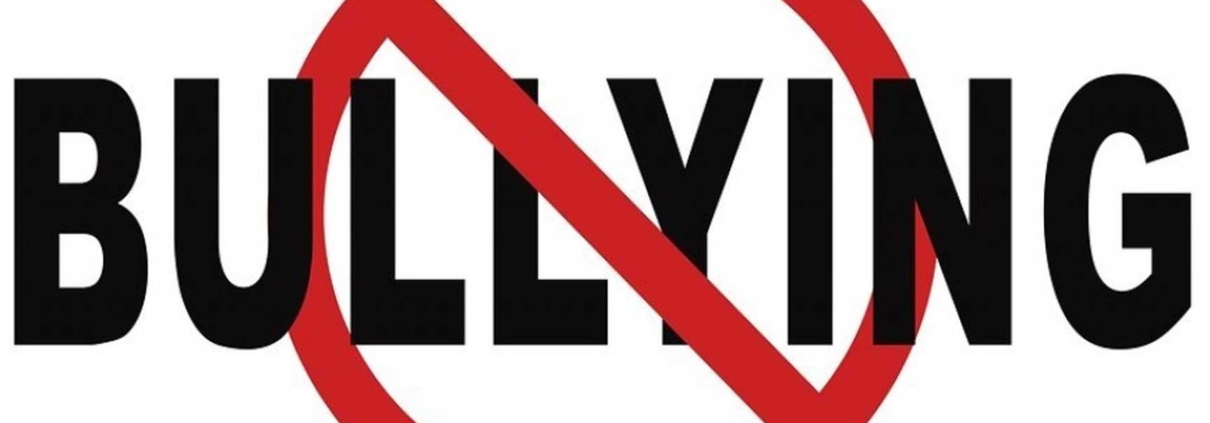A Mother’s Story of Faith, Hope, and Love

By: Nikki Braverman, Brand Manager Spectra Baby USA
Motherhood. It starts long before the baby is born. From the moment those two little faded lines pop up, the floodgates open happiness, excitement, anxiety, fear; sometimes an overwhelming combination. The advice is coming from all directions whether it’s asked for or not. Hey, don’t get it wrong – support is a beautiful thing, and everyone can benefit from it. But never forget the power of pure instinct and faith; sometimes it pushes through life’s most difficult challenges. Lauren Bender, 33, is a perfect example.
When Lauren’s water broke at 16 weeks, she was devastated. Her long-time trusted OB-GYN called her as she was getting examined in the emergency room with her husband, and immediately started offering her condolences. After all, Lauren’s history was concerning. While her first pregnancy nearly three years ago was successful and resulted in a healthy birth, she had recently suffered from two back-to-back miscarriages. She was told if there was a third, the chances of her continuing with a healthy pregnancy would drop drastically. Although Lauren was advised it would be in her best interest to accept that this pregnancy was not going to progress, and the safest option would be to terminate the pregnancy in the safe confines of the hospital; Lauren held onto one thing, Madelyn’s heartbeat.
Here’s a summary of Lauren and Madelyn’s journey:
Spectra: Walk us through the day your water broke.
Lauren: It was on a Sunday morning in March. My family and I just arrived at church. I leaned over to grab something and felt a sudden large gush. Having suffered from two miscarriages, I immediately thought it was blood and ran to the bathroom. When I realized that it was fluid and not blood, I knew that my water broke and that was much worse.
Spectra: No one really prepares you for having your water break so early on. What happened when you were admitted to the hospital?
Lauren: I immediately had an ultrasound, and it was confirmed that my water had broken, and there was very little fluid. The terminology is called (PPROM), preterm premature rupture of membranes. PPROM only occurs in 8 to 10% of all pregnancies, and typically labor starts within 24 hours. My OB-GYN gave Madelyn a 0% chance of survival and recommended staying at the hospital until I naturally went into labor, inducing labor or terminating the pregnancy. She explained the risk of rupture and infection, should I continue with labor outside of the hospital. I was adamant that as long as there was a heartbeat, I would not intervene with the pregnancy. I also requested that I be discharged. Once again, my doctor reiterated the risks and advised against my wishes. It was then that I asked for a second opinion, and was referred to Dr. Paul, who specialized in multiples and high-risk pregnancies.
Spectra: How was his approach different?
Lauren: From the moment I met him, I immediately felt more at ease. His delivery was much gentler. Because of the gestation, he estimated a 1% chance of survival for Madelyn. But he also stated that he’s seen many miracles while in practice and will never say never. I then expressed my desire to be discharged. I had a two-year-old at home and wanted to grieve in privacy with my family. Because at that point, I still thought I would more than likely lose this baby. Dr. Paul agreed. He said I could go home and that I would come in for weekly visits.
Spectra: What was your thought process to keep you going? What precautions did you take during your day-to-day?
Lauren: At that point, I really turned to my faith, time would tell. I’m lucky to have a job that allows me to work from home and a supportive husband that took great care of our 2 year old and handled all our day to day responsibilities. Once I settled in, I started going online and doing tons of research. I came across countless stories of similar scenarios with babies surviving. Again, 16 weeks was a very early scenario, but I went on to learn that babies were pulling through in such cases. I joined an online group called “pprom premature rupture of membranes waters break,little heartbeats support,” Their slogan is where there’s a heartbeat, there’s hope. This group offered a lot of support and literature that helped me get through the coming weeks. I rested, drank lots of water, and continued to turn to my faith. It’s also important to note that I couldn’t start seeing Dr. Paul, my high-risk OB-GYN until I entered the “viable stage,” around 23 weeks. My weekly visits with my current OB before the 23-week mark were challenging. She continued to tell me “not to expect a miracle” and that the odds were against me. I would always leave crushed. But once I finally had the opportunity to transfer over to Dr. Paul, I started to feel much more positive, and each weekly visit felt better than the next. He would say things like “I can’t believe you’re still pregnant. This little baby is a fighter!” He was very encouraging.
Spectra: What did you do to stay positive?
Lauren: It was hard, I honestly wavered. I just had to know that I did everything in my power to give Madelyn every opportunity for survival. That attitude really helped me push forward. I also had a lot of support from my husband, friends, and family. They would call, come over, pray, bring me cooked meals, and always offer a shoulder to cry on. Work was also a helpful distraction; I would rest and work from my laptop in bed. This was my day-to-day until I finally got admitted into the hospital.
Spectra: Tell us about the birth.
Lauren: I was admitted at 26 weeks and was immediately put on steroids. Within 24 hours of my second dose of steroids, I had an adverse effect and went into labor. I was given magnesium sulfate to slow it down and it worked. Another 10 days of hospital bedrest went by and on Labor Day evening I started to bleed heavily. I was monitored closely overnight and the next morning it was advised to have a c-section at 28 weeks while the baby and I were both healthy and well. Later we learned the bleeding started as a result of acute placental eruption, which was enough reason to justify moving forward with the C-section. Madelyn was born on May 29th, 2018. Following her birth, she was admitted to the NICU and initially was on full life support. She gradually weaned from an oscillator ventilator to a traditional ventilator and continued to be intubated for 4 weeks. She also had a nasogastric tube (NG tube) placed and received her milk through this tube for the next 14 weeks.
Spectra: Describe your experience in the NICU. When did Madelyn get to go home?
Lauren: The NICU was a rollercoaster of emotions each day. I would arrive at 7:30am and leave at 5:00pm each day. During that time, I would kangaroo (skin on skin time) with Madelyn for as long as I possibly could. The Neonatologist would do their rounds each day and allowed me to be a part of the decisions on her care. Luckily, Madelyn didn’t have any major setbacks during her NICU stay. At times, her progress was extremely slow, but ultimately, she just needed time to rest and grow stronger lungs. I left each day, trusting Jesus would watch over our sweet girl and sustain every bit of her health. I prayed that each nurse assigned to Madelyn would have great favor over her. That she would receive care from them as if it was myself caring for her. Evenings were hard, but that was the time I needed to focus on my 2 year old at home. During Madelyn’s 4 month stay at the NICU, I learned a lot. So much more than I had ever wanted to know, but it prepared me to have a child with special needs home. On her discharge day, September 28, 2018, I felt fully prepared and equipped to care for Madelyn. I knew her distress cues very well and how best to handle them. The nurses and Neonatologist taught me and gave me all the tools I needed to be the best mama for Madelyn and her special needs. I’m so grateful for all of them during her NICU journey. They will always have a special place in my heart.
Spectra: Can you tell us about your breastfeeding journey?
Lauren: Breastfeeding was always essential to me. I breastfed my first, Molly for 16 months, and only stopped once I became pregnant because my milk dried up. While I was pregnant with Madelyn, I had a dream that I was breastfeeding her. I took it as a sign and clung onto it. Once Madelyn was born, she was on high oxygen support, so she wasn’t allowed to nurse or take a bottle until she was 14 weeks old. In the meantime, I pumped religiously, which was also encouraged by the hospital. They fortified my breastmilk with human milk fortifier and later with formula, to give her the extra calories she needed (*this is standard protocol for micro-preemies).
Spectra: Did you work with a Lactation Consultant in the hospital? How was that experience?
Lauren: Yes, and I LOVED her. We hit it off right away. Luckily, having breastfed before, I already had a good understanding of breastfeeding and knew the different nursing positions. The LC was incredibly encouraging and supportive the whole time we were in the NICU. Finally, at 14 weeks we tried giving Madelyn a bottle, but she didn’t take to it at first. She immediately choked and gagged, so we stopped. The next day I tried breastfeeding, and she was a complete natural! She latched right away and nursed for nearly four minutes. She did take a while to learn to take a full feeding, particularly during my letdown. At that point, I was working from the hospital and would arrive daily at 7 a.m. My lactation consultant would assist me daily. It was a long process for Madelyn to build up her stamina to take all her feeds orally (breastfeeding and bottle), but I give my lactation consultant a lot of credit. She devoted so much time working closely with us and I don’t think we would have gotten discharged nearly as soon if it weren’t for her.
Spectra: Can you go more in depth about your pumping journey? We know at one point; you were exclusively pumping. How was that different?
Lauren: I started immediately pumping after Madelyn was born, even before we knew if she was going to make it or not. When your baby is in the NICU, you’re limited on what you can do because it’s so regulated. The hospital encouraged that Madelyn receive breastmilk, and I knew it was one of the best things I could give her during that time. My breastmilk came in within 48 hours after her birth. She was getting tiny doses at first, about two mls every couple of hours. Madelyn was only two pounds at this time. The hospital provided me with my own pump and supplies; this way I didn’t need to bring everything back and forth. I continued to pump every 2-3 hours until my milk was established at 4 weeks. After that point, I pumped every 4 hours. During the 3.5 months of exclusively pumping, I pumped 4000+ oz for Madelyn.
Spectra: How is Madelyn doing today?
Lauren: She is doing great! At 10 months, she’s off oxygen completely now. She has some catching up to do with gaining weight and gross motor skills, but I know without a doubt she’ll get there. She’s a determined girl!
Spectra: What advice do you have for moms in similar situations?
Lauren: Find people to lean on – support groups, friends, and family. I’m a Christian, so prayer is something I turned to daily. Make sure you choose a doctor you trust. I interviewed a few different specialists and needed a referral to leave my regular OB-GYN to transfer over to Dr. Paul. The process was a little awkward, but so worth it. I was much more at ease with Dr. Paul and trusted his direction.
Lastly, remember that you’re your baby’s advocate. No one is going to love and fight for your baby as much as you are. Yes, listen to professionals but don’t hold back from doing your research and trusting your mama instinct.
Notes from the LC
Melissa Portunato MPH, IBCLC, RLC
All babies benefit from the nutritive properties of breast milk but the benefits are even more important for premature babies. Premature or preterm babies (born 3 or more weeks before their due date) are at a greater risk of infection and health problems early in life. Breastmilk can never be duplicated and can enhance the health, growth and development for fragile babies.
Mothers of premature babies produce milk different in composition than full-term babies. Preterm milk is higher in fat and easier to absorb enhancing brain development and neurological tissue. Research suggests premature babies who receive breast milk have 10 times lowered risk in contracting life-threatening illnesses. As a matter of fact, breast milk is so important for premature babies that it is quite likely they will receive donor breast milk if mom cannot provide her own breast milk.
Breastfeeding a premature baby may come with challenges. They might have a harder time learning how to latch and staying latched to the breast which can make feedings take a little longer. You can still provide breast milk to your baby even if baby is not latching directly to the breast. Using a hospital strength pump is an effective way to express milk and establish a healthy milk supply. Pumping a minimum of 8-12 times per day will ensure healthy milk production. Combine breastfeeding with skin to skin – which has been proven to increase milk volume, increase weight gain, stabilize the baby’s heartbeat, and is even linked to premature babies going home sooner!
Working closely with a medical team including a lactation specialist like an IBCLC (International Board Certified Lactation Consultant), Pediatrician, and Neonatologist will help in providing the support and education parents need to be successful. Are you pumping for a baby in the NICU? Share your story below! We’d love to hear more about your journey!














